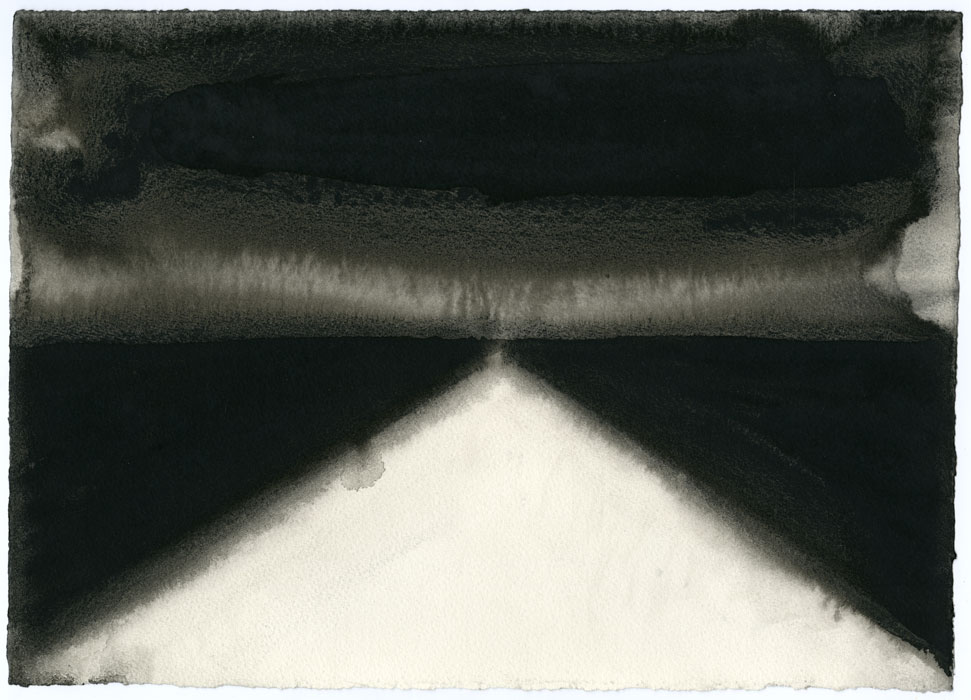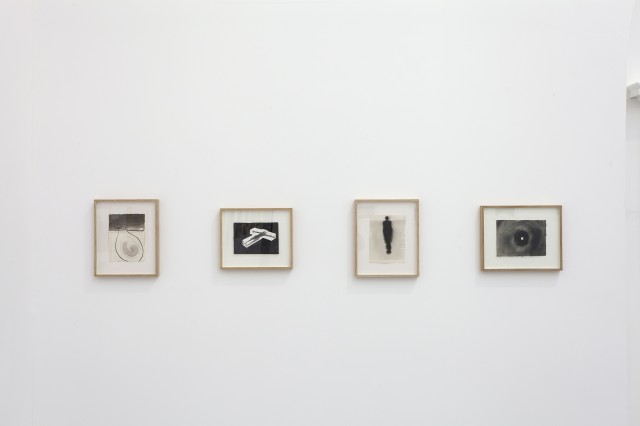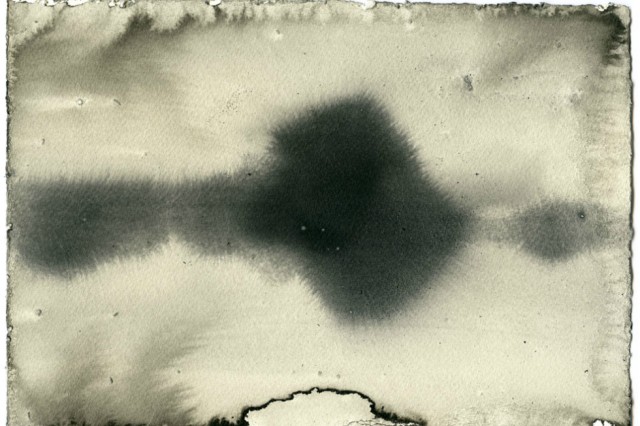“Contemplate what it is to be human”: Antony Gormley’s Elemental — Reviewed

Although they may not be as instantly accessible as his Iron Men, an afternoon spent with Gormley’s Elemental drawings is time well spent, says Kellie Grogan…
Antony Gormley uses art as a way to engage in a collective consciousness and explore the corporeal aspect of being human; inhabiting a body, living consciously within it and experiencing the world through it. His 2005 installation Another Place exemplifies such aims: one hundred cast-iron sculptures — moulded from Gormley’s own body — face out to sea across the length and breadth of Crosby beach, Merseyside, and have helped make Gormley one of Britian’s most recognisable artists working today.
His figuartive work has fostered such an affinity and kinship within the community that a public campaign managed to stop their planned move to New York in 2006, securing the Iron Men permanent residency at Crosby. This year marks their tenth anniversary. In celebration, Gormley has brought an exhibition to The Atkinson in Southport, 15 miles north of Crosby beach. However, this is an art show in which you will find neither iron nor sculpture; Elemental decisively offers an insight into his prolific output of drawings — testament to Gormley’s own words, that “a day passed without drawing is a day lost.”
In Elemental, Gormley has brought together two sets of drawings: Body & Light and North Light, installed simply across four gallery walls. Body & Light consists of 37 frames that feature the artist’s exploration of depth within the body, as well as depicting the body immersed. Drawn at Coniston Water in the Lake District, they were completed between 1990 and 1996. The 14 drawings which make up North Light were created in 2014 during a period of time spent in Norfolk.
Both sets of drawings are on handmade paper, using pitch-black ink and casein to create oozy, seeping marks. Using an economy of ink, Gormley makes muted grey tones and allows the whiteness of the paper to be a significant part of the completed drawings. This makes the drawings verge on abstraction; which, interestingly, may be a little less instantly gratifying to those visitors drawn here because of Gormley’s public sculptures. Hung formally on white walls, and never exceeding paper 16 x 24 inches, this is another side of Gormley’s practice that simultaneously feel linked to and removed from the sculptures of Another Place.
Part of why Another Place worked so well is that it has an immediacy to it, giving a broad range of people the opportunity to engage with and see oneself in relation to the sculptures — or ‘surrogate bodies’ as Gormley calls them — in outside places. At Crosby beach, one is often buffeted by high winds, standing in tidal pools and tasting salt on the air; all of which add to the experience. At Elemental, people have to walk into a traditional gallery space; cutting themselves off from the natural world and their surroundings, the opposite of Gormley’s most popular works. Where the picturesque, stormy clouds of Crosby beach frames the Iron Men, the white walls of the Atkinson can’t compete.

But taking these drawings on their own merits, there is actually much to be gained from Elemental. The vastness of Coniston Water is a significant influence for the Body & Light drawings, with water proving an effective study for Gormley’s ideas. Up, for instance, shows a body submerged in water, moving and reaching across the page toward the light at the top left hand corner. It brings to mind the feeling of exhilaration of such a moment, when one punctures the water’s surface to catch a breath; re-living it through looking at the drawing connects the viewer back to such lived moment.
The technique used to create the drawings also feels particularly fitting; the flow of black ink over white paper is visually and physically not too far removed from the constantly flowing water which inspired them. Throughout these 37 frames, bodies and spaces emerge, captured in ephemeral moments; unmistakably human forms appear in enclosed areas within the darkened page, with rays of light popping through. Gormley once described the sculptures of Another Place as being surrogate bodies for us all to jump into and experience the world anew; viewed in such a context these drawings have the potential to work on the viewer in a similar way.
It feels like Gormley is trying to tap into those lived moments in which the environment engulfs the body; in which we slightly lose ourselves outside of the otherwise more quantifiable dimensions of our bodies. It is great to see the genesis of his more public works manifested through drawing.
North Light, unlike Body & Light, and the vast majority of Gormley’s work, puts the corporeal aside. Using black ink and casein in much the same way, grey tones show emerging forms of light and dark, horizons come into focus as does the world outside of our bodies. Astral matter floats in and out, again achieved with a sensitive use of the ink. Gormley gives form to what might be seen in more abstract wanderings, what we perceive as our reality and the drifting of our mind in dreamlike states.

To some extent, the simplicity of this set allows more room for our own projections of what we are looking at. The circular forms of ink in differing grey intensities allude to the universe at large, the happenings of our solar system. They spur on thoughts about the grandness of the universe, an effective record of those moments where we scale ourselves against our surroundings. They have an almost meditative quality. Tehyre remote: all architecture is removed, technology removed. Perhaps this set could be thought of as a visual manifestation of what the Iron Men are searching for out at sea.
At first sight Elemental may seem far removed from Gormley’s more recognisable work. However, these drawings can be viewed as a fitting accompaniment to the likes of Another Place. With a body of water influencing the first set, and the wider world we inhabit influencing the latter, the visitor is called upon to immerse themselves in familiar human experiences, within us or around us. This is definitely a common thread running tightly through all of Gormley’s work. He wants us to recognise and contemplate what it is to be human, and to feel as other human beings do. To Gormley, the value of art lies in fulfilling this ambition. In sticking to such a principle, Gormley stays true to his own musings and steers his own direction.
Although they may not be as instantly accessible, time spent with Gormely’s Elemental drawings is extremely worthwhile; a contemplative experience that lingers beyond The Atkinson’s gallery walls.
Kellie Grogan
This article has been commissioned for the collaborative #BeACritic project — an annual programme of mentoring and commissioned critical articles for North-West-based writers, initiated and supported by The Double Negative, Liverpool John Moores University and Arts Council England. See more here
See Elemental by Antony Gormley at the Atkinson, Southport, until Sunday 15 November 2015 – free entry. Opening times: Monday-Saturday 10am-4pm; Sunday 11am-4pm
Images from top: ROAD II (2014), carbon and casein on paper, courtesy the artist; installation shot at the Atkinson, Southport; HORIZON II (2014), carbon and casein on paper, courtesy the artist
Read Antony Gormley In Conversation: Iron Men At 10
See Pete Goodbody’s picture gallery of Gormley’s studio in London





